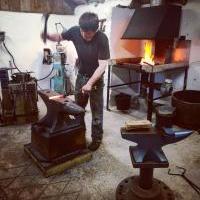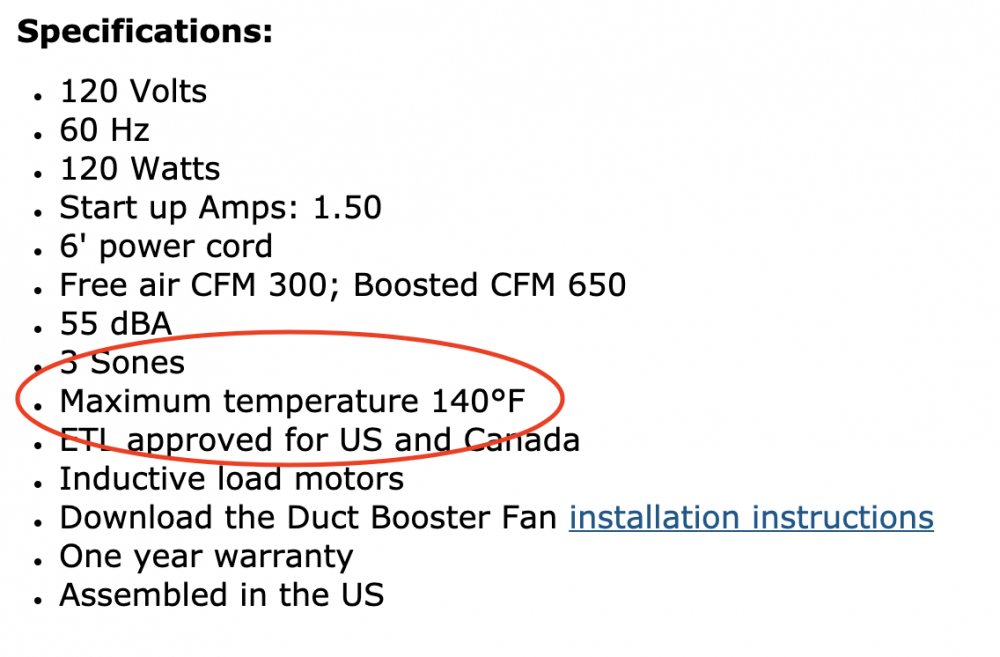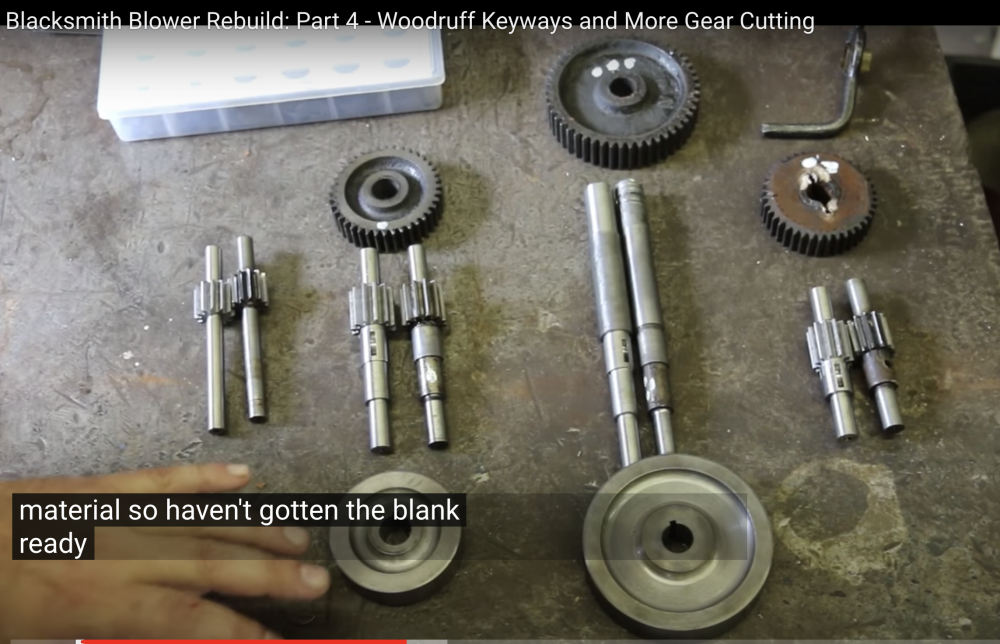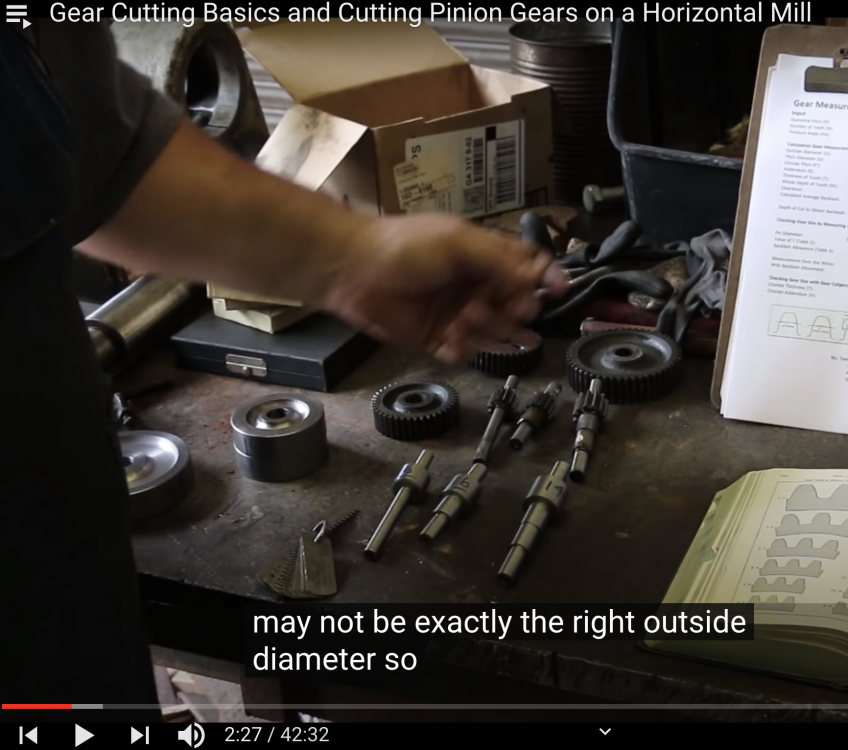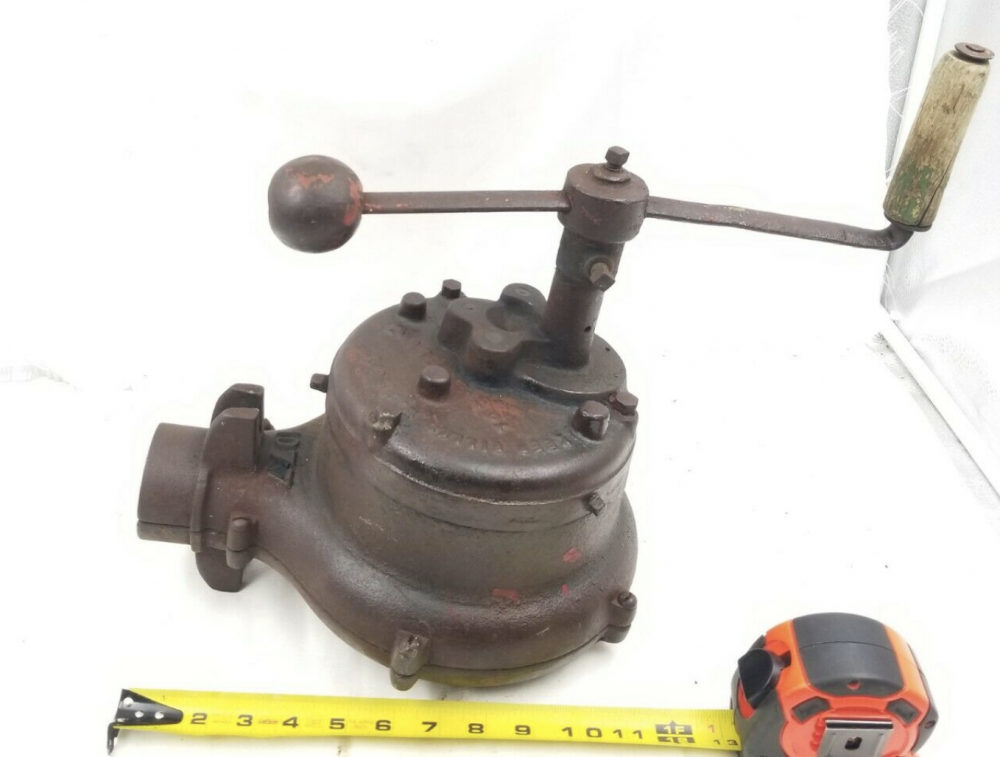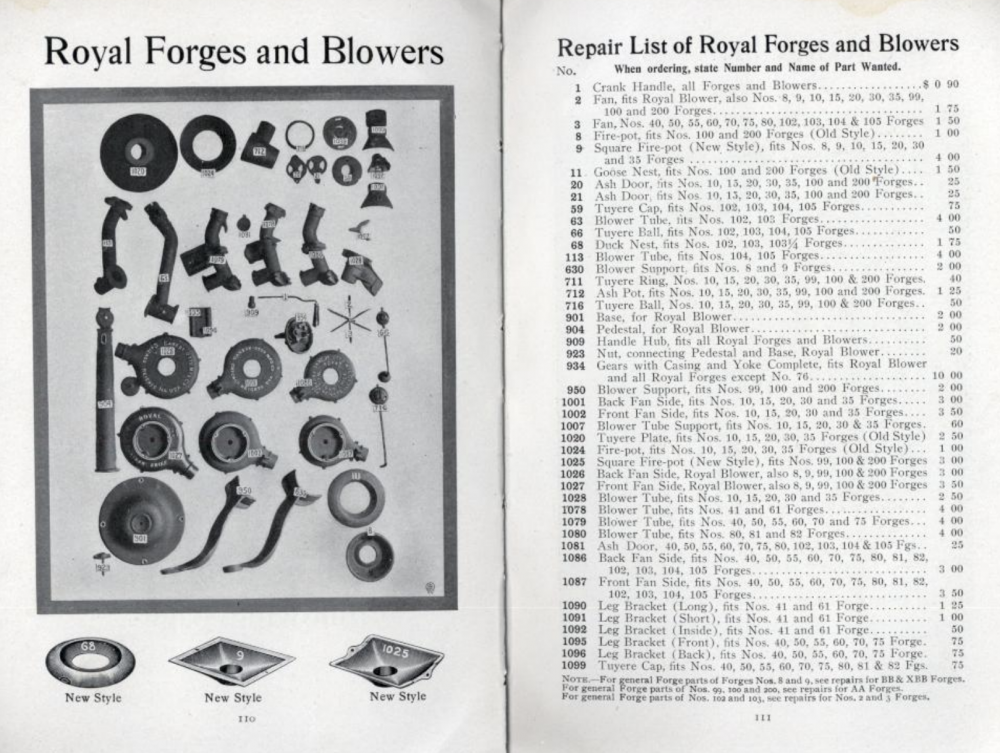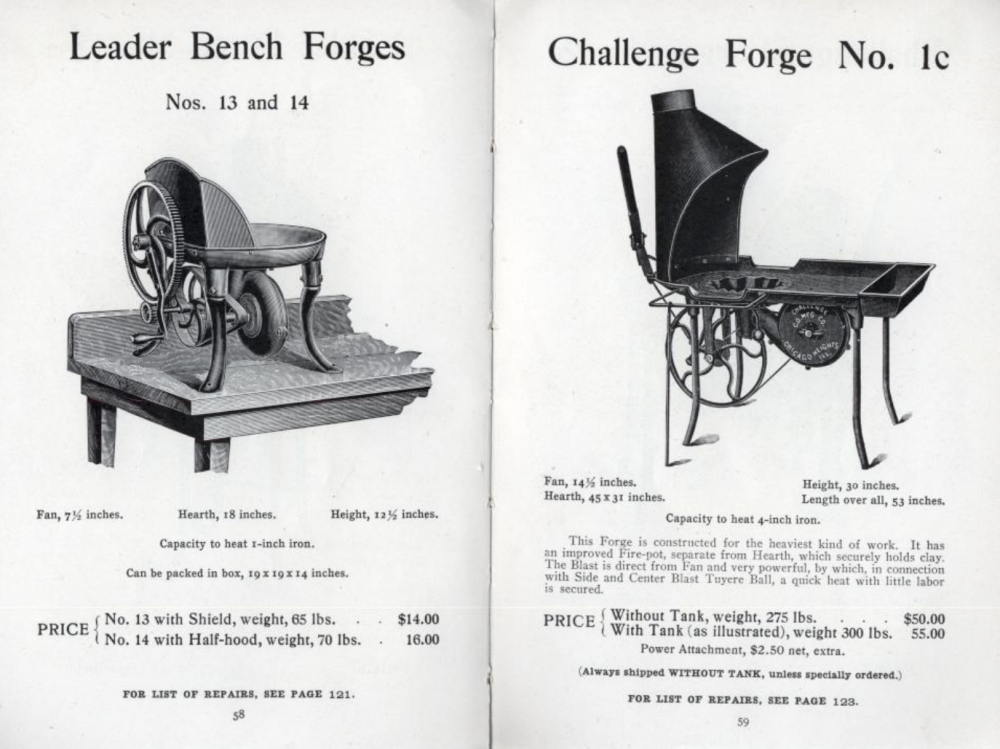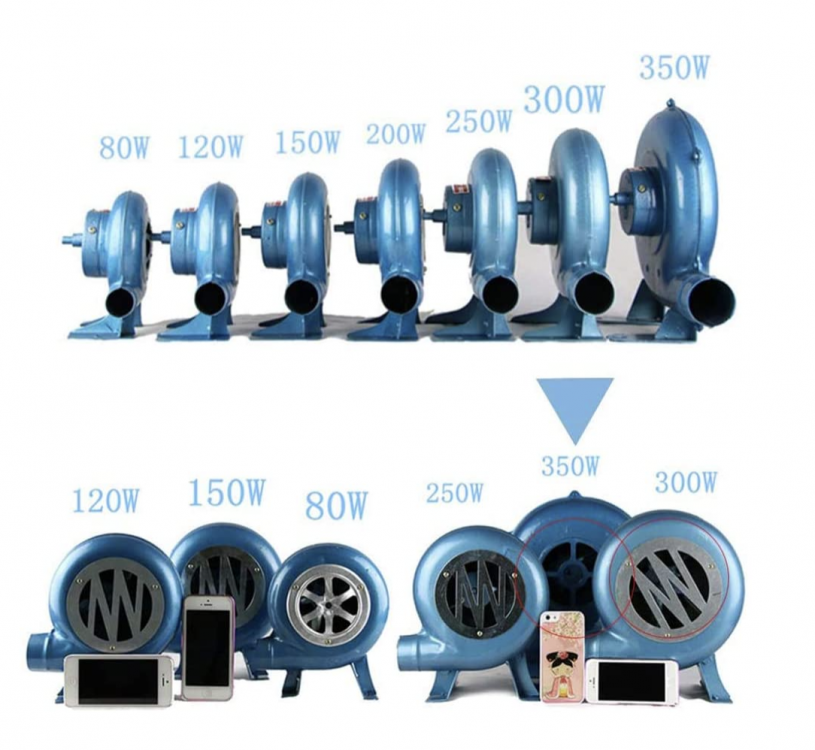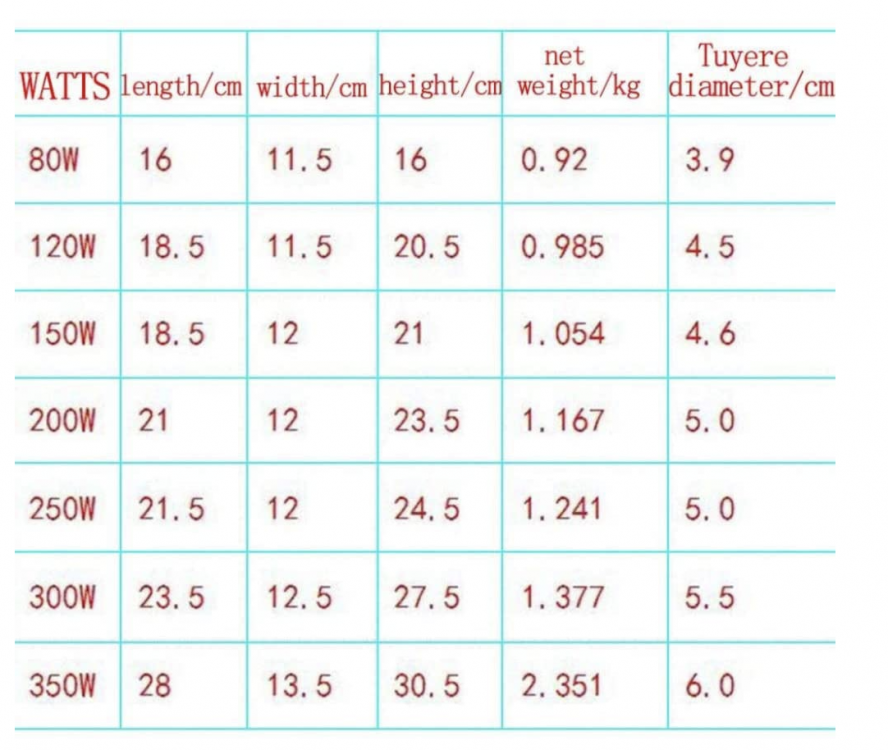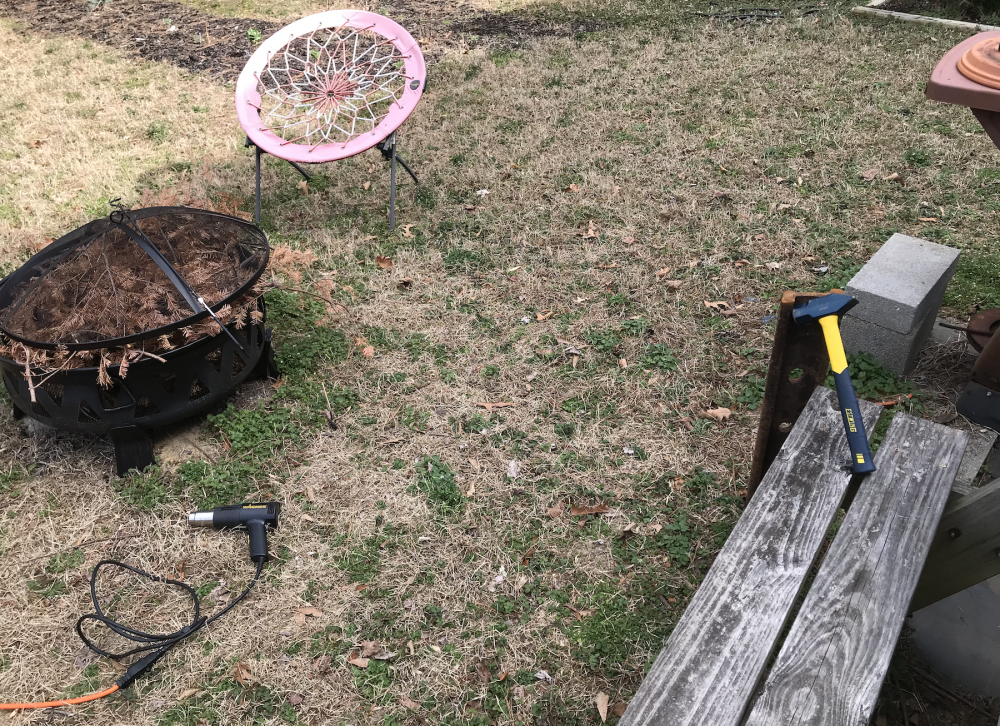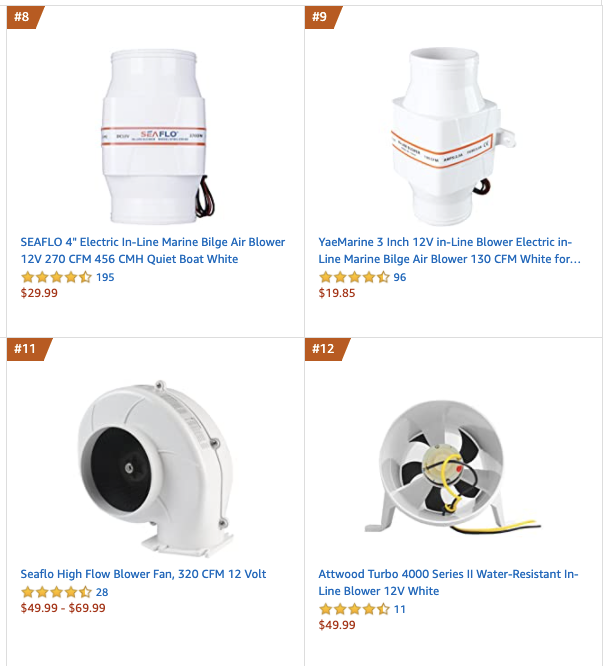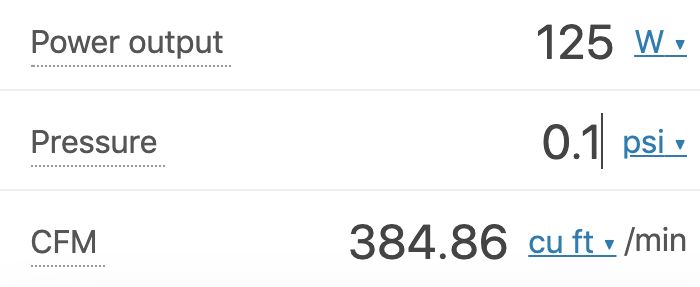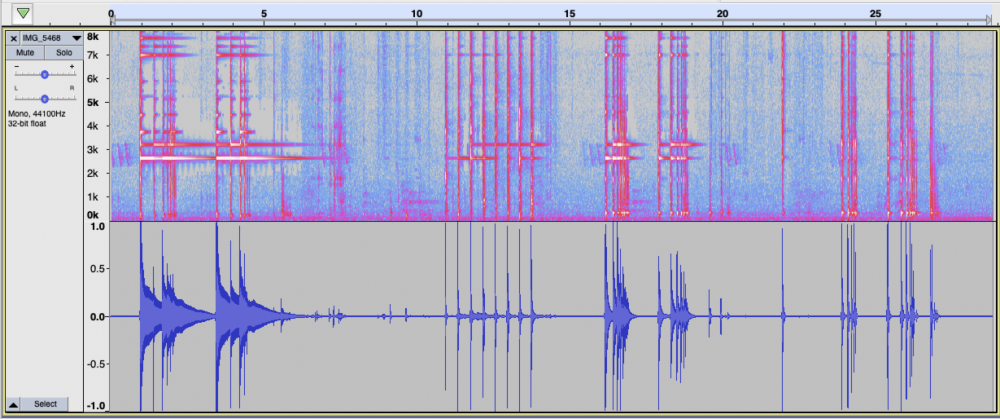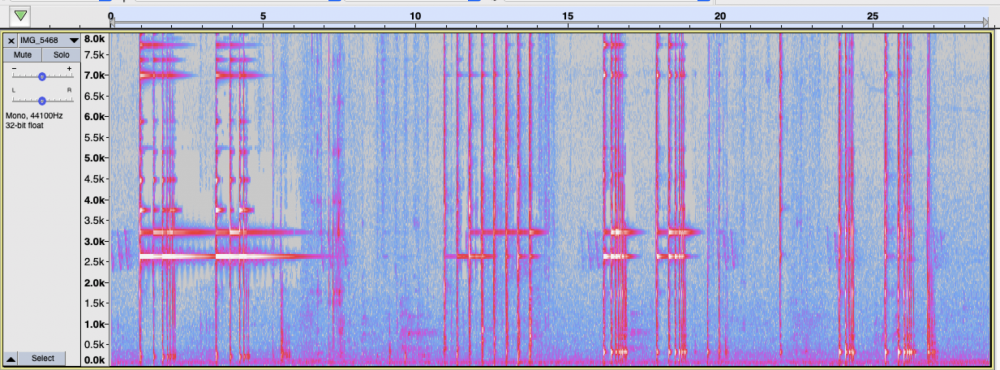
Dave F
Members-
Posts
33 -
Joined
-
Last visited
Profile Information
-
Gender
Male
-
Location
Yorktown, VA
Recent Profile Visitors
345 profile views
-
-
Per those amazing videos, the Canedy-Otto gear train is 50 tooth 16DP : 12 tooth 16DP shaft shared with a 40 tooth 14DP : 12 tooth 14DP shaft shared with a 40 tooth 16DP : 12 tooth 16DP output shaft. So overall, the speed increase is 50/12 * 40/12 * 40/12 = 46.25:1
-
What did you do in the shop today?
Dave F replied to Mark Ling's topic in Blacksmithing, General Discussion
All I did in the shop today was put dirt in a box. https://www.iforgeiron.com/forum/267-jabod-just-a-box-of-dirt/ -
Out of the blue Ebay just Unsolicited Commercial Emailed me the listing on this one. I'd guess it's a ~7.5" fan. Based on the 1077 and 1076 in the pics, and this spare-parts page from that catalog, I'd bet an S-hook that it's a tinier-than-normal Canedy-Otto.
-
As you said, it's hard to tell the size from pictures. Can you measure something on it and say how big it is? From a Canedy-Otto catalog at http://www.bamsite.org/books/canedy.pdf their normal fan size is 10-12". Theydo show some lighter weight ones going down to 7.5" with "Capacity to heat 1-inch iron", and heavier ones going up to 14.5" with "Capacity to heat 4-inch iron". For their 10" fans they say has capacity to heat 3-1/2" iron. How big is tiny?
-
How tiny is tiny? If that's a 3" outlet, the pivot bolt head is about 1/2", the hub is about 1", the pipe is about 2", and the diameter is about 10". Is that about right? That would be huge compared to the new 6" tall "80W hand crank" blowers sold for BBQ grills on Amazon.
-
The David Gingery book on "How to Design & Build Centrifugal Fans for the Home Shop" is very interesting. It talks about the relation between CFM and pressure, how the rpm and diameter turn into surface speed and limits the max velocity and CFM through the outlet, how to shape the ducts with the same 12 degree taper limit Frosty talks about, how to measure the pressures and speeds, etc.. The whole Gingery series is great. Larger input watts driving a larger 9" wheel will get you more CFM out. The sharp bending in the flow from circumferential flow to axial might slow things a bit, but this is designed to be an in-line vent booster. If you need more air out of it, take a look at the Gingery book and consider modifying it to pick up the flow from the circumference. pnut: Regarding undersized blowers, I saw a pretty good picture of the range of the imported hand crank blowers. The 1# blower looks a heck of a lot wimpier than the 5# blower.
-
Frazer, I'm not measuring or computing backpressure, I'm choosing the top end of the 0.1-0.4psi range of forge backpressures from the old Machinery's Handbook pages, where it looks like they are talking of the junction into the forge, then I over-optimistically assume 100% efficiency in converting the electrical power into air power. Once you de-rate the blower down into it's actual operating envelope, then the pressure vs. flow tradeoff is pretty much P1 * V1 = P2*V2 -- If the clinkers double the pressure, they'll halve the flow. I'm planning on my 25yo "Aussie Folding Grill" as the B for a JABOD. pnut, a year outside is pretty good for particle board. My family was in the particle board industry since the 40s. We used it for everything and turned lots of it back into sawdust.
-
Cool setup pnut--It's nice to see systems that look like a practical, achievable step up from mine. On the stump is that a vise, bending jig, guillotine tool, or something else? Don't laugh, but here is a picture of my improvised picnic-table, firepit, hot-air gun, RR fishplate-stuck-in-the-dirt setup. The soft fishplate works a little better when I grind it flat, but I really wanted more space. JBOD is next. My whiney Coleman AC Mattress blower is 170W. That looks like overkill relative to a 1/6HP furnace blower or Champion 400. I'll try it out. With the air-horsepower link removed above, the conversions between PSI, CFM, and power is this constant: 1 HP = 745.7W = 100psi * 2.296 CFM (or 1 CFM = 745.7W / 229.6psi or 1 CFM = 3.248 W/psi ) So for my 170W blower at 0.4psi back pressure and 100% efficiency, maximum ideal CFM is: 170 W * 1 CFM/(3.248 W/psi) / 0.4psi = 130 CFM
-
Last fall I was experimenting with the end of a railroad fishplate as an anvil, a firepit with wood as a forge, and a handheld AC heatgun as the blower. I could get to some kind of orange, but the whole setup was pretty awkward. Even though that DC fan specs 213CFM, with only 22.8w power input, its output flow at forging pressures might be something like 1/4 of what a Champion 400 hand-crank blower might push. I have battery and an AC air mattress inflators and they both whine so loud I can't imagine listening to them for longer than a mattress fill. Last year I was using an old bathroom blower for drying out a waterlogged sunfish hull, but it died. I thought about a marine blower like one of these below, but I found that the ~1CFM natural flow from a black ABS corrugated drainpipe as a chimney worked pretty well for the humidity-extracting purpose. The $50 12V marine blower from Amazon looks like it might be 60W, but that still might deliver only a fraction of what a hand crank puts out. Then I thought a junkyard automotive heater fan might be a good GTTS solution for a quiet 12V blower, but it's hard to see the specs. We've been living like hermits under COVID, so I haven't been able to go scrounging for my hobbies.
-
I came to this thread wondering about the sizing of a blower, and it looks like the answers are all is that rather than CFM, you need an adequate pressure vs CFM balance, and psi * CFM converts into watts. I've got an oversized solar panel for lawn tractor battery maintenance, so I can get some 12V power out of my shed a bit easier than 120V, and I was curious about what sort of blower I could use. A cheap 24W or 65W motorboat inboard engine blower seems a bit undersized, but maybe there's a 10-15A car heater fan I can get from the junkyard.
-
With this ... and several of the other refs on the thread, a 1/6hp or 125W furnace blower seems adequate. Ignoring efficiency and using the calculator at link removed with the various pressures on the thread, that 125W gives CFMs of: 13 CFM at 3psi /48 ozf/in2 / 20kPa 38 CFM at 1psi / 16 ozf/in2 / 6.9kPa 96 CFM at 0.4psi / 6 ozf/in2 / 2.8kPa 384 CFM at 0.1 psi / 1.5 ozf/in2 / 0.690 kPa I might look for a 125W 12V furnace blower for the solar panel by my shed.
-
Anvil stand mass and stiffness
Dave F replied to Dave F's topic in Stands for Anvils, Swage Blocks, etc
If you wanted to get fancy, you could firm it up using steel for the dovetails and wedge. I was thinking a couple RR spikes could work to capture one end of the base and leave the hardy hole more open, but the 2x6s were handy and easy to try. -
Anvil stand mass and stiffness
Dave F replied to Dave F's topic in Stands for Anvils, Swage Blocks, etc
BartW: Yeah, mass on the horns do a lot for noise. I was surprised how much just gripping a horn in a fist quieted the ring. Twigg: I tapped near the center of the face. It was a spectrogram of the audio track from the iPhone video posted on Youtube. The entire documentation of my data collection procedure is contained within the video. Since it's somewhat awkward to extract the data from Youtube, I attached an MP3 file of the audio data. I opened the video file with Audacity audio editor (free from https://www.audacityteam.org/ ) and clicked the Track's downward-triangle to choose "Spectrogram". One could also use Audacity's Analyse/Plot Spectrum tool, but the spectrogram gave a pretty decent overview. I just noticed that the "MultiView" option is cooler: IMG_5468.mp3 -
Anvil stand mass and stiffness
Dave F replied to Dave F's topic in Stands for Anvils, Swage Blocks, etc
Which premise is wrong? I'm trying to say that the energy you lose to a real-sized anvil & stand has to be bound between the real-sized anvil free-floating in space and a perfect, earth-sized anvil, and that any losses at the changes of material between the anvil and the stand, the stand and the earth, or to the cruddy materials the stand is made out of, or the soft, peaty earth under my log, all must fit within those bounds. Those losses at every change of material are the elasticity and ductility of the material, and the impedance mismatches between the differences in densities and propagation speeds at the interfaces. The quality of those connections are measured in well they reflect, transmit, or transform energy. The instantaneousness of the impact depends on the ductility (and elasticity) of the work. You can measure the force-time impulse with expensive sensors, but the quick & dirty way is to divide the depth of the deformation by speed of the hammer per-impact--If you let a hammer drop 1 meter onto your yellow heat steel, it will be going 8.85m/s, if it makes a 1mm deep divot, the impact took ~0.001m/(8.85m/s)=0.113ms. The shallower the divot, the faster the impact (at zero depth, it's how long it takes to compress your elastic hammer or anvil like a spring). I used a premise of 0% rebound, as if I hit a chunk of sticky, soft lead, doing the maximum possible about of work to the workpiece, to focus on the energy that is transferred into the anvil system. Using those premises, doing the physics 101 inelastic collision math reproduced the result that a 40:1 anvil:hammer ratio is pretty good, and puts numbers to just how good it is (97.6%) relative to heavier or lighter ratios. The first is well known, but the I thought the second was pretty interesting: This measure of anvil efficiency is basically 1-hammer_mass/(hammer_mass+anvil_mass) You can get some extra anvil_mass credit for better support, and a 150# dead, delaminated anvil might work like a 10# anvil poorly coupled to a 140# base. I'm not claiming that the sound energy propagating down through the steel, stand, earth, and bedrock will rebound back up to deform the workpiece, I'm claiming that depending on the size of the anvil, there's limits on how big the losses between the anvil & stand and between the stand & earth, and how much stand improvements or any possible voodoo can make an anvil "work" like a bigger anvil. If you think my tables and graphs should bend differently because I've got the premises wrong, please tell me. ## There's other important criteria for stands, like portability, noise, stability, immobility, maintainability, functionality, and carvings. Noise-wise, I might experiment with caulk, but I think this double-horn Acciaio might be shaped like a tuning fork, and improved holding of the handle of the tuning fork might not solve it. Here's a time-spectrogram of my movie above, (using "Audacity") showing the frequencies of the paired taps on the loose, wedged, and magnet-ized anvil.

